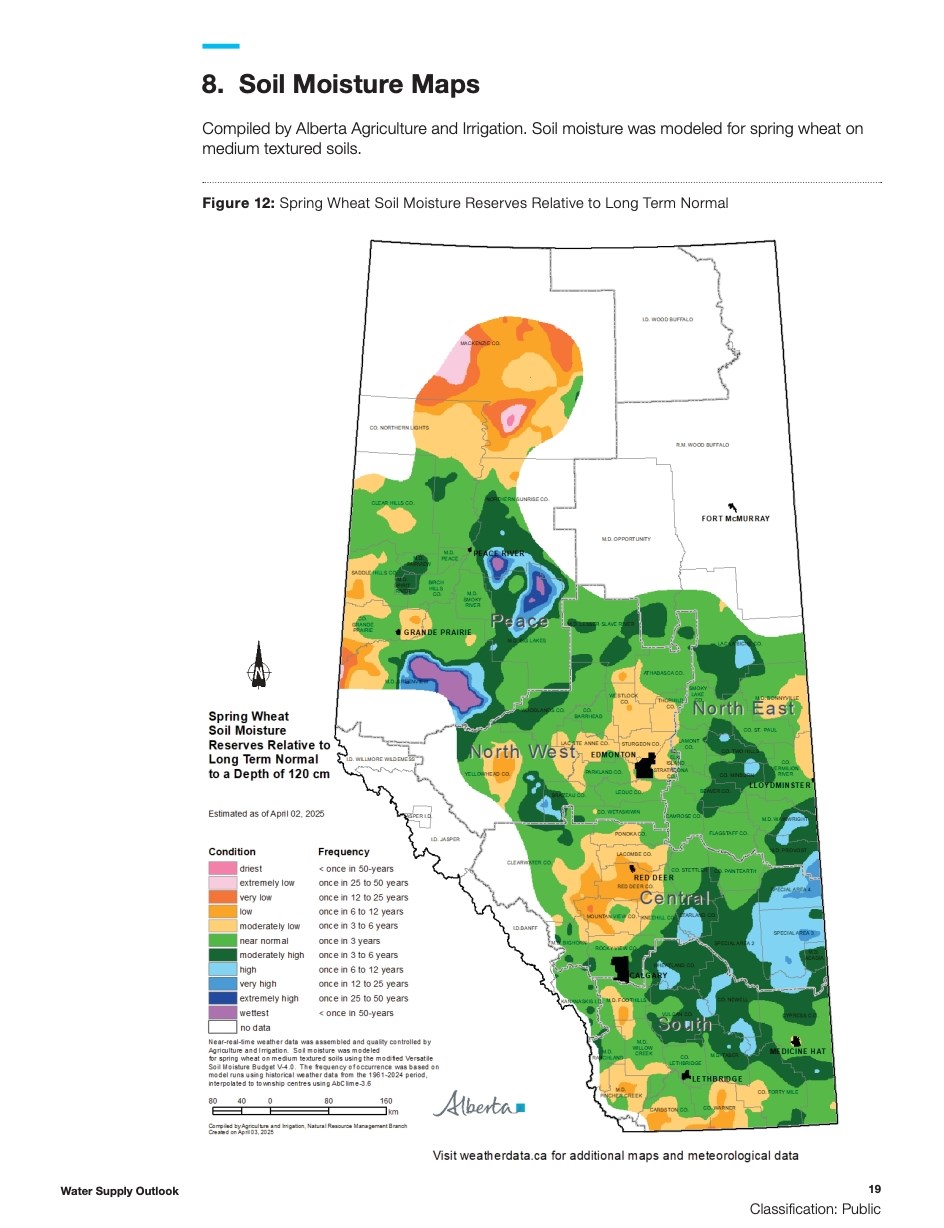LAKELAND – The government of Alberta’s Water Supply Outlook for April shows normal to below normal soil moisture levels in the Lakeland area, and Environment and Climate Change Canada states that “The April-May-June forecast probability of temperature product indicates a likelihood of above normal temperatures across most of Alberta.”
Research Agrologist Lance Ouellette from the Lakeland Agricultural Research Association (LARA) said there is optimism that this year will be better than last year but warned that anything could happen.
“I do check the moisture maps with Alberta, and it gives you a really broad idea of what's going on, but there's so much variability. You can go one mile down the road and it's wet versus dry . . . So I look at these maps with a grain of salt,” said Ouellette.
He said there is even variability within the distribution of the rainfall pattern, and areas deemed to have average soil moisture can still experience below average soil moisture levels.
“We have trials in all three counties, and what happened to us last year is that Smoky Lake and St. Paul had the same amount of rainfall, but not the same distribution pattern, so the crops came out completely differently. Our site in St. Paul got 13 inches of rain, but if you went three miles north, they got six inches of rain,” said Ouellette.
Janice Boden, Manager of Agricultural Services for the MD of Bonnyville, explained that there may be some wetlands that are still frozen and holding water, which has the potential to add more moisture once it thaws.
“Currently, our soils are holding moisture, and light rain is in our forecast over the next week. We are experiencing some higher-than-normal winds this week [and] this can dry our soils quite quickly,” said Boden.
When asked about what producers can do to prepare for drought conditions, Ouellette spoke about the benefits of regenerative agriculture for increasing the organic matter and how much water holding capacity the soil has.
“For mitigating moisture levels, there's really not much you can do other than build up organic matter over time, so that's a long-term process. And that’s why regenerative practices are so popular, because they are so good at building up that organic matter,” said Ouellette.
He said that alternatively, one could switch to a perennial crop.
“That’s why there’s such a big push towards putting in hay crops. The perennial crops have a really deep root system, so they can withstand a dry year,” said Ouellette.
Boden said if a trend of dryness persists, farmers may need to adjust fertilizer schedules or choose more drought tolerant crops, such as barley over wheat.
Recalling last year’s conditions, Ouellette said, “Last year was a drought year for sure. We also had a heat wave in July, and it was like the crops just shut down. The areas that did well got moisture either just before or after that heat wave. It was dry in August and September as well. It was cold in May and then all of a sudden it was like someone turned on the oven in late June,” said Ouellette.
This year, Ouellette says things are looking different.
“It doesn’t look like it’s going to be quite as bad. Last year going into spring it was very dry, there was no snow, and the dugouts were very low. This year we’ve got a little more moisture, and so people are a little more optimistic,” he said.
Boden also noted that dugouts seem to be fuller than last year.
If adequate soil moisture persists, Boden anticipates a successful growing year.
“We expect seeding to be smooth and successful for our farmers. Germination should be adequate, and plants will develop a strong root system, setting farmers up for a great growing season,” said Boden.



